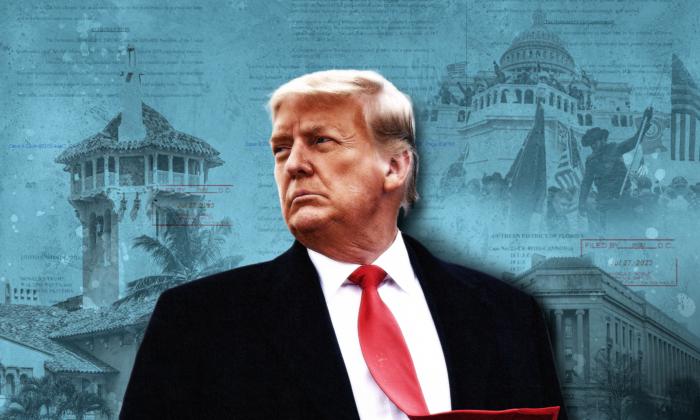Editor’s Note: This is an abridged translation of an article by Wang Shangyi, which was originally published in SecretChina on May 27.
The additional 25 percent tariff imposed by the United States on $200 billion worth of Chinese goods will trigger a new round of factory closures in China, driving economic collapse.Factory Closures and Relocations
The 25 percent tax rate will reduce Chinese exports in two ways. Firstly, it directly halts the export of a considerable amount of products, and factories will rapidly transfer orders and production capacity outside of China. In the short term (within one year), this will exceed $50 billion, or even up to $100 billion. In the medium term (within two years), the majority of production could be transferred abroad.Secondly, the export base crackdown will force all relocatable manufacturers to move away. Regardless of whether it’s the $200 billion export segment or the $267 billion one, after seeing the sharp increase in taxes, they will all be anxious to move.
The Chinese Communist Party (CCP) officialdom fully trusts in U.S. investment bank Morgan Stanley, which erroneously concludes [in a July 11, 2018 report] that the United States will suffer more losses than China, and that Trump would not dare to overdo the trade war.
The report’s false and irresponsible GDP calculation has been propping up CCP officials’ confidence that “China will win” the trade war. But the CCP does not realize that after exports are blocked, this not only directly affects the entire export industry chain, but also the financial bubble—especially the real estate bubble—which will soon burst.
Exports to Other Countries Affected
The closure of factories in China that produce goods for export will directly affect China’s real economic output by as much as 6-8 times. The 25 percent tariff increase on $200 billion goods will cause an even greater impact by forcing large numbers of factories to move out of China. These factories not only service exports to the United States, but to other countries as well.Major Industrial Chains Impacted
Of the $200 billion goods affected, most come from low technology industries with major industrial chains, such as clothing, shoes and hats. Although such products have a low unit price, the majority of raw materials, auxiliary materials and accessories are produced in China, and can drive China’s industrial chain by 3-4 times as well as meet the demand for peripheral services. So the economic impact is huge.GDP Reduction and Unemployment
A reduction of trillions of GDP in the physical export economy will deal a heavy blow to the Chinese economy and push the Chinese economy into collapse mode. This consists of two aspects: One is that GDP is greatly reduced. Using 90 trillion yuan ($13.04 trillion) GDP as a basis, if GDP decreases by 4.2-5.6 trillion yuan, that is a reduction of 5-7 percent.According to China’s official statistics, its GDP growth is 6 percent, so China’s GDP growth will be cancelled out. Considering the GDP from December 2018 to January 2019, this number may be minus 20 percent. At the minus 20 percent level, another 5 percent reduction results in minus 25 percent, clearly indicating that the Chinese economy has entered the mode of collapse.
The other aspect is mass layoffs and the sharp increase in unemployment. The steep decline in output from 4.2-5.6 trillion yuan ($608-$811 billion) in low and medium-end exports will result in the loss of 10-20 million low and medium end jobs. One can only imagine the impact such a large-scale job loss would have on social stability.
Further taking into account multiple international trade relations, the reduction in Chinese exports is even greater. When China reduces exports by $200 billion, even without considering the loss of foreign exchange after foreign-funded factories move out, the State Administration of Foreign Exchange would have to reduce imports by $200 billion in order to make up for the $200 billion lost in exports.
Foreign Reserves and Financial System Hit Hard
China’s foreign reserves and financial system will also be hit hard. Foreign reserves will decrease by 200 billion U.S. dollars, and base currency will decrease by 1.4 trillion yuan. According to China’s existing deposit reserve ratio (14 percent for large banks and 12 percent for small and medium banks), using a 6 times currency multiplier, it will be 8.4 trillion yuan ($1.2 trillion) in revaluation.If the CCP starts to “print money without an anchor” to fill the 8.4 trillion yuan ($1.2 trillion) gap, then the same amount of money will face a sharp reduction in actual foreign reserves, further exacerbating the foreign reserve crisis. If “printing money without an anchor” is not used, currency will be reduced by 8.4 trillion ($1.2 trillion).
Although 8.4 trillion yuan ($1.2 trillion) accounts for only 4.7 percent of 182 trillion yuan ($26.3 trillion), it is invaluable to the current stock market and property markets, and the reduction will directly trigger a new round of stock market crashes and the accelerated collapse of the property market. The stock market will fall off by at least 25-30 percent, and the property market by more than 30 percent.
In the context of the blow-up of the P2P (peer-to-peer lending) and other usury, the 8.4 trillion will cause most medium and small-sized banks to fall into bankruptcy crisis.
A foreign reserve crisis will also directly cause the CCP to face a survival crisis. If China does not reduce imports, foreign reserves will be reduced by 200 billion U.S. dollars, and China’s real foreign reserves will be strapped for cash. The CCP will have to adopt more stringent foreign exchange controls to reduce the foreign exchange losses.
At present, the CCP’s foreign exchange controls are already quite tense, which has caused some people to be alert. As regulations become increasingly strict, the number of people detecting a problem will increase dramatically, not only accelerating the withdrawal of funds out of China, but funds invested in China will also be greatly reduced, exacerbating foreign exchange tensions.
Large-Scale Decline and Crisis
After exports decline sharply, the stock market and the property markets plunge, banks fall into bankruptcy crisis, tens of millions of people lose their jobs, and the CCP’s institutional economy will fall into a large-scale bankruptcy crisis.As the stock market continues to plummet, companies owned by CCP moguls will no longer be able to withdraw assets from the market. As the property market continues to plummet, trade volume will decrease, and a large number of real estate companies will go bankrupt. The railroad and other infrastructure projects will be unable to be maintained, upstream industries will completely shut down, and the support services industry will close, further causing unemployment for tens of millions of people.
Car sales will continue to decline, causing another round of production suspensions and layoffs. Local government tax revenue will reduce drastically, and due to reduction in currency, it will be even more difficult to issue bonds, large amounts of pension insurance, medical, and institutional wages will be suspended, and local governments will prepare to go bankrupt.





